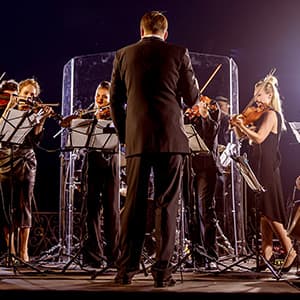

Rachmaninoffs Symphony No 2 Tickets
Up to 30% Off Compared to Competitors.
Location: Select Location (e.g, New York)
Events Nearby
We're Sorry. There are currently no events near you.
About Rachmaninoffs Symphony No. 2
Currently, Rachmaninoff's Symphony No. 2 is frequently performed by orchestras around the world, demonstrating its enduring popularity and significance in classical music. In recent months, several notable orchestras have included this symphony in their concert programs. For instance, the Chicago Symphony Orchestra has scheduled performances under the baton of their principal conductor, which is expected to draw large audiences eager to experience the lush sounds of Rachmaninoff's orchestration live. Additionally, symphony orchestras in Europe and Asia have also highlighted this work in their seasonal lineups, often pairing it with contemporary compositions or other classical masterpieces to provide audiences with a rich musical experience. In terms of recordings, several prestigious labels have released new renditions of the symphony, featuring renowned conductors and orchestras, showcasing the piece's adaptability and timeless appeal. Furthermore, music festivals dedicated to the works of Russian composers often feature Rachmaninoff's Symphony No. 2, celebrating the composer's legacy and the emotional depth of his music. The integration of this symphony into educational programs and youth orchestras also reflects its importance in the training of future musicians, ensuring that Rachmaninoff's music continues to be celebrated and performed for generations to come.
Rachmaninoffs Symphony No. 2 History
Sergei Rachmaninoff composed his Symphony No. 2 in E minor, Op. 27, between 1906 and 1907, a time when he was navigating the challenges of his career following the disappointing premiere of his First Symphony in 1895. The Symphony No. 2 marked a significant turning point for Rachmaninoff, showcasing his mastery of orchestration and melodic development. The symphony is a lush, Romantic work that reflects Rachmaninoff's deep emotional expressiveness, a hallmark of his style. The premiere took place on February 8, 1908, in Saint Petersburg, conducted by the composer himself. The reception was overwhelmingly positive, and the symphony quickly became one of Rachmaninoff's most popular works, solidifying his reputation as a leading composer of the early 20th century. The piece is structured in four movements, each contributing to a rich tapestry of themes and orchestrations, with notable features including sweeping melodies, intricate harmonies, and a profound emotional depth. Its success led to numerous recordings and performances, ensuring its place in the standard orchestral repertoire and influencing generations of composers and musicians.
